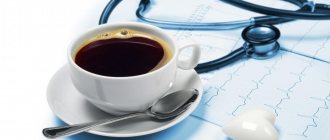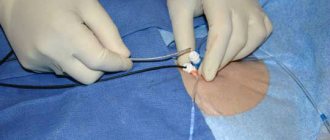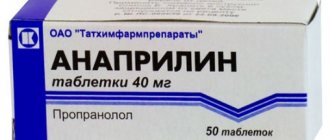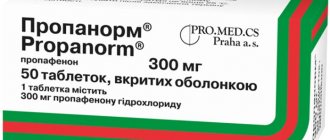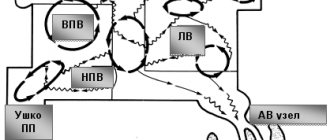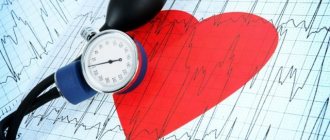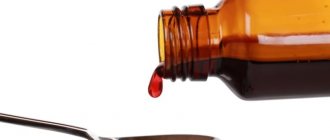Atrial fibrillation (the most common type of arrhythmia) becomes more common with age. At the very beginning of the development of the disease, it may not manifest itself in any way, but even then it can provoke a brain stroke. And later it develops into heart failure. People with high blood pressure and patients with type 2 diabetes are at risk. The best way to detect incipient atrial fibrillation in time is to catch it in fact during an attack using a pocket-sized ECG device for the heart.
Atrial fibrillation
The most common cause of death in the world (in developed countries) is cardiovascular disease. We can rejuvenate our body as much as we want, but if we miss heart disease, then everything will be in vain. Heart disease most often does not begin suddenly. And often they develop gradually, without manifesting themselves at all, or sometimes manifesting themselves. For example, one of the most common arrhythmias is atrial fibrillation. How atrial fibrillation looks on an ECG of the heart can be seen in the previous picture. It can sometimes occur in attacks. And that’s when it needs to be promptly noticed and treated in order to prevent it from developing to a stage where it becomes permanent. Atrial fibrillation eventually develops into life-threatening conditions: brain stroke, blood clots. I propose to consider atrial fibrillation in this article.
The risk of atrial fibrillation (also called atrial fibrillation) increases with age. The chronic course of atrial fibrillation leads to an increase in the risk of death by 1.5-2 times. This disease affects 1-2% of people.
Links to studies on the consequences of atrial fibrillation:
- www.ncbi.nlm.nih.gov/pubmed/9737513
- www.ncbi.nlm.nih.gov/pubmed/11978585
- www.ncbi.nlm.nih.gov/pubmed/14569181
- www.ncbi.nlm.nih.gov/pubmed/11343485
In the United States, about 2.2 million people have atrial fibrillation, and about 4.5 million in the European Union.
Link to this fact:
- www.ncbi.nlm.nih.gov/pubmed/11343485
According to research, the risk of developing atrial fibrillation in men and women over 40 years of age is about 25%
Link to this study:
- www.ncbi.nlm.nih.gov/pubmed/15313941
Atrial fibrillation killed 112,000 people worldwide in 2013
Link to statistics:
- www.ncbi.nlm.nih.gov/pubmed/25530442
How does atrial fibrillation manifest?
Atrial fibrillation can develop gradually:
- Newly diagnosed atrial fibrillation is a first-time episode.
- Paroxysmal atrial fibrillation - an attack lasts no more than 7 days (usually less than 48 hours) and then spontaneously returns to sinus rhythm.
- Persistent atrial fibrillation - attack lasts more than 7 days
- Long-term persistent atrial fibrillation - an attack lasts more than 1 year.
- Persistent atrial fibrillation is a long-lasting arrhythmia (for example, more than 1 year), in which measures to restore the rhythm were ineffective.
Link to data source:
- www.ncbi.nlm.nih.gov/pubmed/16908781
At the very beginning of the development of the disease, the patient may not feel any symptoms, and the disease itself can be detected accidentally during a routine ECG of the heart or after a life-threatening stroke of the brain (in 6% of patients with atrial fibrillation, blood clots form in the left atrium every year, which enter the bloodstream into the blood vessels of the brain, causing a stroke).
Over time, mild symptoms may appear (a feeling of rapid heartbeat, discomfort or pain in the chest), during attacks, frequent urination may be observed, then daily activity gradually decreases until disability, heart failure occurs (manifested by weakness, dizziness, shortness of breath, fainting) .
Link to these facts:
- www.ncbi.nlm.nih.gov/pubmed/8281651
- www.ozon.ru/context/detail/id/5800531
- www.ncbi.nlm.nih.gov/pubmed/24474959
An effective but difficult drug Verapamil: everything patients need to know
Verapamil belongs to a group of blockers of slow calcium channels, which are located in the muscle fibers of the heart and blood vessels. Used to treat angina pectoris and cardiac arrhythmias, arterial hypertension. To quickly eliminate the symptoms of the disease, injections are prescribed, and then they switch to taking pills.
Pharmacological properties
By slowing down the passage of calcium ions through the cell membrane, Verapamil inhibits the use of energy contained in the ATP molecule. When used, mechanical contractions of the muscular layer of the heart and the walls of blood vessels slow down. As a result, the following effects appear:
- myocardial oxygen demand decreases,
- coronary and peripheral arteries dilate,
- blood flow to the heart increases
- blood pressure decreases,
- contraction frequency slows down,
- the formation of impulses in the sinus node is restored.
After injection into a vein, it begins to act within 5 minutes, the second peak is observed at 3 - 5 hours.
The antiarrhythmic effect appears almost immediately after entering the blood, and blood pressure drops within a few minutes.
When taking tablets, it is quickly absorbed from the intestines and excreted in the urine. After regular use, bioavailability increases and the drug works faster.
Contraindications to the drug
It is not recommended to prescribe the drug in the presence of the following conditions:
- a sharp drop in blood pressure (cardiogenic shock);
- acute period of myocardial infarction;
- disturbances in the conduction of cardiac impulses from the atria to the ventricles;
- weakness of the sinus node;
- a decrease in blood ejection from the ventricles below 30% of normal;
- pulmonary hypertension;
- heart rate below 50 beats per minute;
- blood pressure in the arterial network is below 90 mm Hg. Art.;
- Wolff-Parkinson-White, Lown-Ganong-Levine syndromes (accessory pathways in the myocardium);
- individual high sensitivity;
- treatment with beta blockers.
For patients with renal and liver failure, the drug is recommended with caution; it is not removed from the body by hemodialysis. It is prescribed to nursing and pregnant women only for health reasons, as it penetrates the placenta and into breast milk.
To learn why Verapamil should not be combined with beta blockers, watch this video:
Possible side effects when taking
Patient reactions to Verapamil may include the following symptoms:
- dizziness, increased weakness;
- low blood pressure, low pulse;
- headache;
- digestive disorders - constipation, stomach or intestinal pain, nausea;
- redness and swelling of the skin.
Under the influence of the drug, reaction speed and the ability to concentrate attention are reduced, so driving or operating complex machinery is not recommended, especially in the first week of use. Verapamil enhances the toxic effect of alcohol and its elimination from the body, so patients are prohibited from drinking alcohol while being treated with this drug.
How to use Verapamil
The dosage and frequency of administration are selected by the doctor individually after conducting a diagnostic study, which includes blood tests, including a biochemical complex, ECG and functional exercise tests.
For high blood pressure
The mechanism of the hypotensive effect of Verapamil is associated with a relaxing effect on blood vessels, which is accompanied by a decrease in peripheral resistance.
An important feature is the simultaneous decrease in heart rate, thereby facilitating the work of the myocardium. The effect of the drug is evident from the first days of treatment, but a stable improvement in blood pressure is observed after 2 - 3 weeks of use.
The initial dose is 120 mg, taken in 3 divided doses. If necessary, it can be increased to 480 mg. Large dosages are not used due to the risk of bradycardia; if the pressure is not stabilized, then another drug is prescribed or diuretics are added to therapy.
At low pressure
Hypotension under the influence of Verapamil increases, so it is not recommended for such patients. A decrease in cardiac output and a rare heart rate in them can lead to circulatory failure.
Therefore, during the treatment process, constant monitoring of blood pressure and pulse rate is required.
For arrhythmia
The drug is used for all types of tachycardia, flutter, if their source is the atria. In case of rhythm disturbances of ventricular origin, Verapamil is not effective.
Doses for adults and adolescents whose body weight is above 50 kg average 40 to 80 mg per dose. The tablets are swallowed whole, taken 3 times a day with meals, and washed down only with clean water.
Grapefruit juice is strictly prohibited for simultaneous use with this medication.
For angina pectoris
Verapamil has the property of quickly restoring coronary blood flow caused by narrowing of the arteries supplying the heart. Therefore, it is used for all types of angina (tension and rest). If myocardial infarction develops, especially with a decrease in blood pressure and bradycardia, it is not prescribed.
If the course of the disease is accompanied by tachycardia, then after 7–15 days from the onset the drug can be included with caution in the complex therapy of a heart attack. The dosage for patients with coronary heart disease averages 240 - 360 mg per day, divided into three times.
Which is better - Verapamil tablets or injections?
Intravenous Verapamil is prescribed to relieve an attack of tachycardia or angina, as well as during a hypertensive crisis. In children, the drug can be used by injection only if there is a rhythm disorder.
The administration of Verapamil should be slow, under the supervision of a physician, ECG readings and blood pressure monitoring.
If there are signs of heart failure, they must first be compensated for with cardiac glycosides.
Administration of Verapamil under blood pressure control
After eliminating the acute condition, you need to switch to taking pills as soon as possible. The course of treatment is determined individually; it should be discontinued with a gradual reduction in the dose in order to avoid exacerbation of the symptoms of the disease.
If an overdose occurs: signs and actions
When an overdose of the drug occurs, the following symptoms occur::
- low blood pressure;
- slowing of heart contractions, up to cardiac arrest;
- dizziness, fainting or shock;
- convulsions;
- cessation of intestinal and kidney function.
To restore the functioning of the heart and other vital systems, gastric lavage is first performed, even if the drug has been taken for a long time. Resuscitation is carried out using the usual methods: defibrillation, cardiac massage and artificial respiration.
The specific antidote is calcium gluconate; 10 ml of a 10% solution is injected intravenously. To increase conductivity in the myocardium and speed up the heart rate, Atropine or Isadrine is used; with a significant drop in blood pressure, Dopamine or Norepinephrine is used. Infusion therapy is carried out with Ringer's solution or 0.9% sodium chloride.
We recommend reading about the treatment of atrial fibrillation with drugs. You will learn about antiarrhythmic drugs, treatment of chronic AF, antithrombotic therapy and surgical treatment of rhythm pathology. And here is more information about why atrial fibrillation is dangerous.
Who is more at risk of developing atrial fibrillation?
Now let's determine who is at risk. Anyone who is at risk should definitely have a regular heart ECG. Moreover, atrial fibrillation is not the only heart disease, and cardiovascular diseases are the main cause of mortality in developed countries (about 53-56% of all cases). People at risk include people suffering from high blood pressure, type 2 diabetes mellitus, people over the age of 75, patients with thyrotoxicosis (a condition associated with excess thyroid hormones), chronic lung disease, people suffering from obesity, kidney failure, and also sleep apnea (snoring). Having atrial fibrillation in close relatives also increases the risk of atrial fibrillation.
Links to studies of diseases associated with atrial fibrillation:
- www.ncbi.nlm.nih.gov/pubmed/25443231
- www.ncbi.nlm.nih.gov/pubmed/23453870
- www.ncbi.nlm.nih.gov/pubmed/24474959
- www.ncbi.nlm.nih.gov/pubmed/23514988
- www.ncbi.nlm.nih.gov/pubmed/17276180
- www.ncbi.nlm.nih.gov/pubmed/15866251
- www.ncbi.nlm.nih.gov/pubmed/15199036
- www.ncbi.nlm.nih.gov/pubmed/23877062
- www.ncbi.nlm.nih.gov/pubmed/23563523
There is an idea that coffee “drives” the heart and causes atrial fibrillation. But studies have shown that moderate coffee consumption is not associated with this disease.
Link to the study:
- www.ncbi.nlm.nih.gov/pubmed/24680173
But, excessive alcohol consumption causes atrial fibrillation.
Link to the study:
- www.ncbi.nlm.nih.gov/ pubmed/24030078
Contraindications
The non-selectivity of anaprilin is the reason for a rather impressive list of contraindications to its use. It is absolutely contraindicated in the following conditions:
- Heart rate up to 55/min;
- sinoatrial and atrioventricular blockade of II - III degree;
- sick sinus syndrome;
- decrease in systolic pressure less than 90 mm Hg. Art.;
- heart failure FC III - IV;
- cardiogenic shock;
- individual intolerance.
Very carefully, and only in cases where it is impossible to use selective beta blockers, anaprilin should be prescribed for the following conditions:
- pregnancy and lactation;
- renal, liver failure;
- children and old age;
- bronchial asthma, chronic lung diseases;
- diabetes;
- increased thyroid function;
- depression;
- myasthenia gravis;
- skin disease psoriasis;
- atherosclerosis of arteries and endarteritis.
Strict monitoring of the course of concomitant diseases is required. There is a high probability that anaprilin may worsen the patient's condition.
How to diagnose and not miss atrial fibrillation
The main method for diagnosing atrial fibrillation is an ECG of the heart. In the initial stage, atrial fibrillation may appear only for short moments and disappear. And therefore, an ECG is done dynamically, using a device that is worn all day (Holter ECG monitoring - 24-hour ECG monitoring). But often it turns out that not a single attack occurs during the day. But often doing such procedures is extremely impractical. You need to make an appointment with a doctor, wait in line, and then wear an uncomfortable device all day.
Link to source of information:
- www.ncbi.nlm.nih.gov/pubmed/24054541
There are other research methods. But, in my opinion, the best way to detect atrial fibrillation in a timely manner is to determine it in fact, as soon as palpitations, chest pain were noticed, and also by measuring the ECG before and after training (for people involved in physical education). For this purpose, there is an inexpensive pocket device that can be quickly used anywhere, at any time, as soon as such an attack is noticed. This device is called a cardio flash drive (you can read more about the cardio flash drive here). After an ECG using such a flash drive, the result is sent to a cardiologist (who collaborates with the cardio flash drive). And usually after 20-40 minutes (maximum 24 hours according to the contract), a doctor’s conclusion is sent to your email. But in fact, atrial fibrillation on an ECG is quite easy to determine on your own.
atrial fibrillation on the ECG (normal rhythm below, atrial fibrillation above)
The picture on the side shows what atrial fibrillation looks like on an ECG of the heart (the ECG curve at the top shows atrial fibrillation). With atrial fibrillation, we see that between the large teeth (R waves) there are many small teeth (shown by a red arrow) - atrial fibrillation. And at the same time, the distances between the R waves (the largest teeth) are different, and not uniform as in the normal rhythm on the ECG curve below.
Treatment of atrial fibrillation
To prevent brain strokes due to the formation of blood clots in patients with atrial fibrillation, aspirin (50 mg per day is sufficient) or other medications to thin the blood or reduce its clotting. But this can only be used as prescribed by a doctor, like any other medicine.
Link to the study:
- www.ncbi.nlm.nih.gov/pubmed/24474959
- www.ncbi.nlm.nih.gov/pubmed/26197188
- www.ncbi.nlm.nih.gov/pubmed/25988464
To regulate the rate of contraction of the ventricles of the heart at the level of the AV node, beta-blockers are used. Such drugs include, for example, propranolol or carvedilol, as well as others. Or they use calcium channel blockers, for example, verapamil. But, in no case should you use beta-blockers + calcium channel blockers at the same time. This may result in cardiac arrest. These and any other medications can only be used as prescribed by a doctor.
Link to the study:
- www.ncbi.nlm.nih.gov/pubmed/16908781
There are other methods of non-drug, as well as surgical treatment, which are done only in medical institutions, and we will not consider them in this article.

